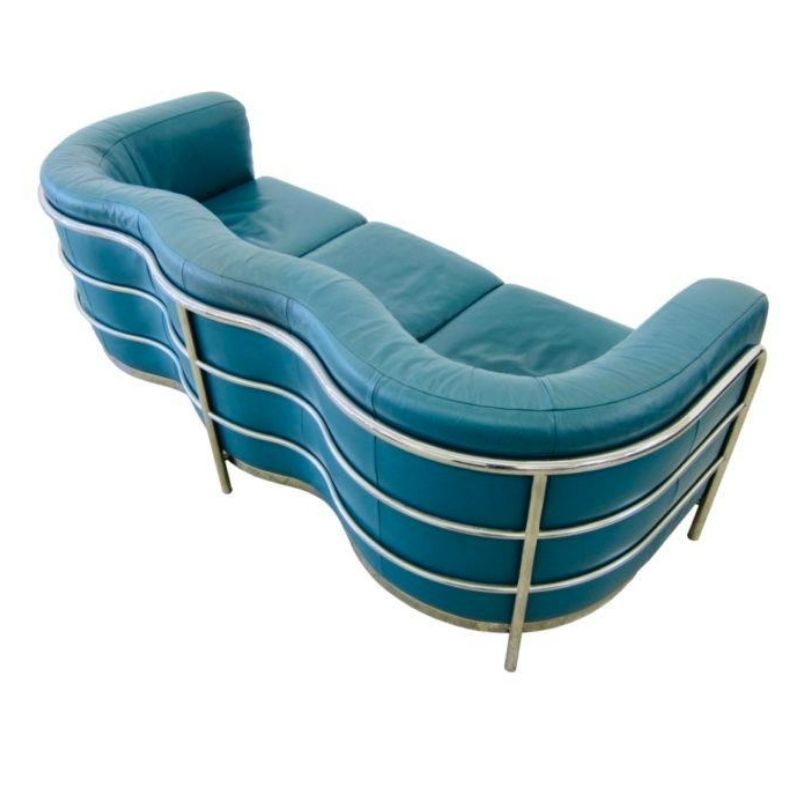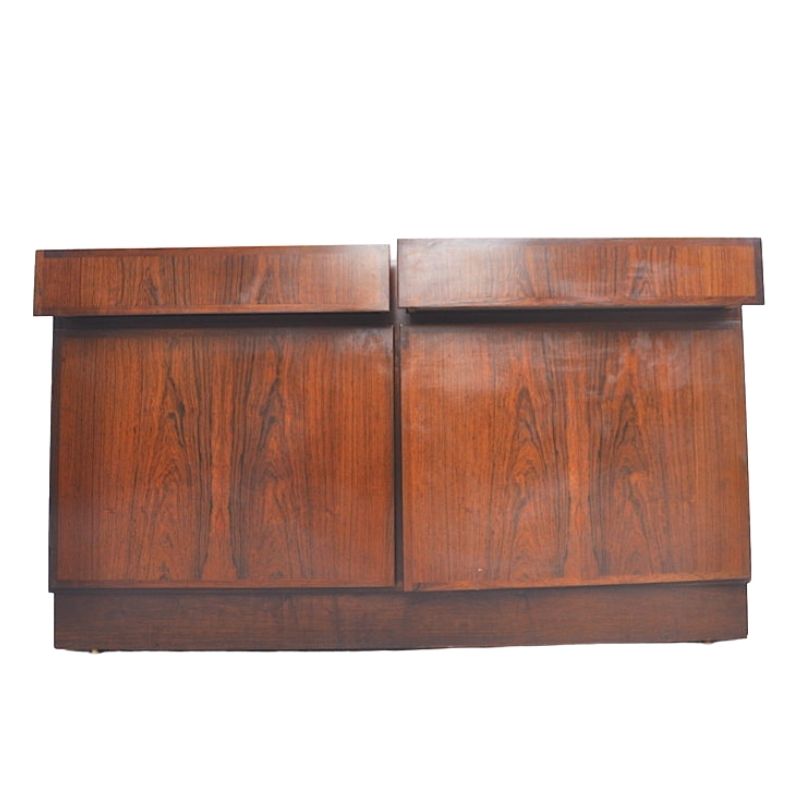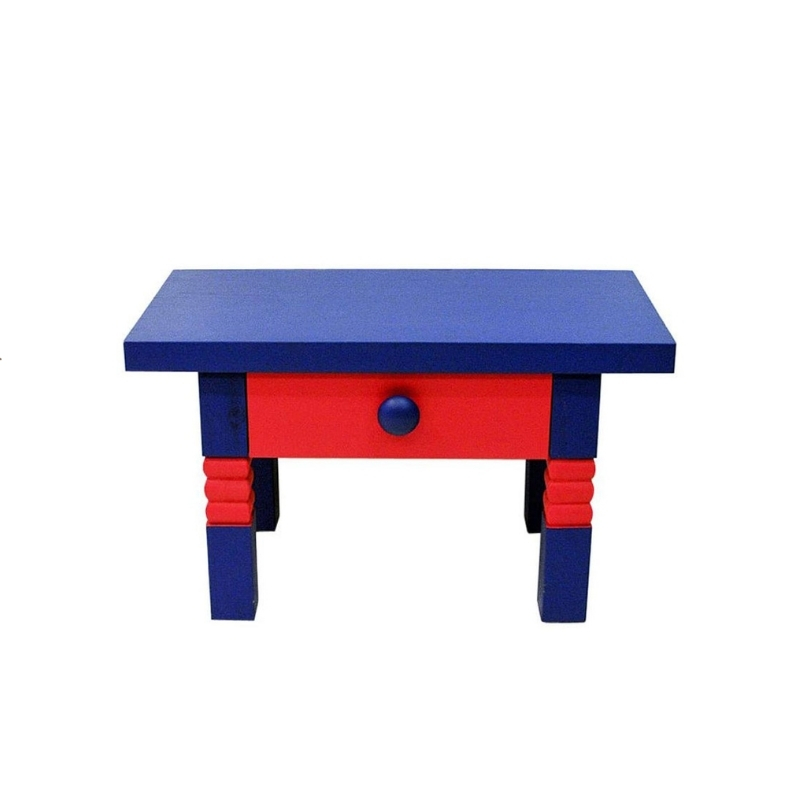Leif
I just upholstered a couple of innerspring back cushions for a Grete Jalk chair. They are thicker at the bottom than at the top and both had the France & Sønner paper tags inside (which I left in place, of course!). But the latex foam was completely dried out. I wonder if yours were newer or if they had been upholstered with leather or vinyl? Air is what dries latex foam.
Anyway, during the year that I lived in Fredensborg, Denmark in the 90s, I loved going to nearby Hillerød to just wander around. I've been down that street so I had to look at the street view on Google maps for old time's sake. It seems that building is no longer there. There's #11 and #17 but nothing in between, just a big vacant lot.
Foam
The cushions are from my three seat sofa France and Søn that is often attributed to Grete Jalk, but is an in-house design to match the chair design of hers according to Simon. They were fabric upholstered, and given the F&F medallion on the sofa, it dates to 1957-1964. The difference between the state of the foam in them and the Eric Buck chairs i am reupholstering was very surprising. And likely they are all of the exactly the same vintage, because they all came from the same owner.
.
There is a simple explanation for the reason that nearly nothing is to find about the history of France & Daverkosen resp. France & Søn: this company was just one of many many other furniture manufactories of the mid-century in Denmark, furthermore it was not the best one but an ordinary one among many others, so for what reason you have to construct an artificial legend about it?
at best it's subjective.
H.Moon has a real interest in the company and its products, as do I, and it seems, many others here.
Therefore it is not irrelevant or unworthy as a history as you seem to suggest.
If you think there are inaccuracies you should address and correct them, for the sake of history.
Everything and everybody has a history, and if people are good enough, or interested enough, to research those histories, then good for them. If they then share that knowledge, then even better.
Because you don't happen to think they were a great manufacturer it doesn't mean others are of the same opinion.
.
Once again for all of you who are interested in danish furniture manufactoring in the mid-century:
France & Søn was one of the first companies which started to produce in industrial manner, nearly no more handcrafted work, and this fact means that the quality of the products didn't become better but worster.
If you compare the quality of the France & Søn products with the quality of small companies which were going on making handcrafted products, you will see the difference, it's obviously visible.
That's just a fact and not my opinion.
Onno
I remember seeing a promo film from PP Mobler, making the wishbone (I think).
It seems to me Hans Wegner is the epitome of original, authentic handcrafted furniture, withing danish production, no?
Several parts are made by full automatic machines, routing out the forms designed by Wegner long ago. I recall the spokesman saying the woodworkers every time stand amazed by the absolute correctness of the machine, watching it doing it's job.
There's certainly something in making a piece by hand, but there's nothing wrong with using the right tool even if that is a machine.
A lot of pieces by Hvidt are made of solid teakwood, something rarely seen in other furnituremakers in scandinavia.
So I do see merit in the production and designs by France & Son.
.
Hi bj, please don't missunderstand me, I didn't want to talk down the France & Søn products, I just want to point to the fact that the products are nothing special among all other danish manufactures.
You are right, generally machine work is not below handcrafted work, but in former times the machines didn't work as perfect as today, and this fact is obviously visible in many machine made products made in the '50s and '60s.
And by the way, if a furniture is made by solid wood that does not basically mean that it's worth and quality is higher than veneered ones, very often the reverse is true because the "art" of veneering is eminently respectable, mainly in former times.
I think you'll find the...
I think you'll find the opinion of many on this forum to be that France and Son *are* something special among Danish furniture makers. They worked with many of the top designers of the time and, regardless of whether they were crafted by hand or machine, are generally of higher quality than a vast majority of the other makers of the day.
And by the way, for those of us who spend considerable time and effort trying to preserve mid-century furniture by means of restoring / refinishing, there is a major difference between veneered and solid furniture. Not to mention longevity - the ability to safely refinish furniture several times over might be the only way for most mid-century modern furniture to continue to be viable 40 years from now.
Facts need full telling
Onno: for a fact to stand as a fact it needs a full telling. Name some pieces by small, all hand work makers that are superior to the work of f&f, then the rest of us can try to see this fact as you see it.
And I think you are probably right that there are slightly higher quality more handmade pieces than f&f. I possibly own some myself, BUT that is missing the forest for the trees, as we say. F&f produced very high quality product in a way that allowed for a very wide market, so there was enough money to attain the benefits of many, many talented professional designers. And it is the combination of design, quality, and availability that gives France and Søn the stature it has, and the resultant prices.
.
I am a dealer of danish MCM since more than 20 years, and thousands of danish furnitures arrived and left our atelier, from all danish manufactories which did exist and still do exist, and several hundreds of them I have restored, so you can be sure that I know what I am talking about.
But anyway, please don't misunderstand me, it's not my intention to talk down the France & Søn quality, I only want to point to the fact that France & Søn items are not superior items, they are not bad, but they aren't superior.
The fact that many famous designers worked together with France & Søn has nothing to do with an estimated superior position of France & Søn on the market place, it was just a question of who can guaranty an attractive distribution of a certain concept, and that was to that time France & Søn.
But none of the (in those days not yet) famous designers did exclusively work for France & Søn, most of the designers had contracts with several other companies.
So please don't make the mistake to attribute an extraordinary image to France & Søn, that would be out of proportion with reality.
And by the way, does anybody know for what reason France & Søn was dissolved in the early '60s and taken over by CADO?
I'm curious about it. 🙂
"Well, it's just an...
"Well, it's just an unprofessional article with some amusing parts which are not really authentic. :-)"
Onno, your later posts to boost your credibility might have been received better if your first post in this thread had any merit.
You have shifted the discussion to something no one else was arguing: that fd was superior to other furniture makers. And you have yet to substantiate three critiques from your first post: "unprofessional", "amusing", and "not really authentic".
Ironically, it will be these three points that I will associate with any of your future posts.
Cado purchase of France & Søn
Onno: I am not sure that it would be correct to say that the company was dissolved when it became Cado. Usually it is said that the company "was sold" to Paul Cadovious who "renamed" it to Cado.
As a point of evidence, if the company had been dissolved, and a new company bought the factory and machinery, you wouldn't expect to see any of the old product with the new owners name on it. However, there are F&S pieces that have the Cado mark on them. Hence, it appears that the transition from France and Søn to Cado was a sale of the entire company, tangible property (factory), intellectual property (designs), employment contracts etc.
All that said, I don't know anything definitive about the "transition," and the internet is even quieter about the history of Cado than it is about the history of France and Søn.
If you need any help, please contact us at – info@designaddict.com









